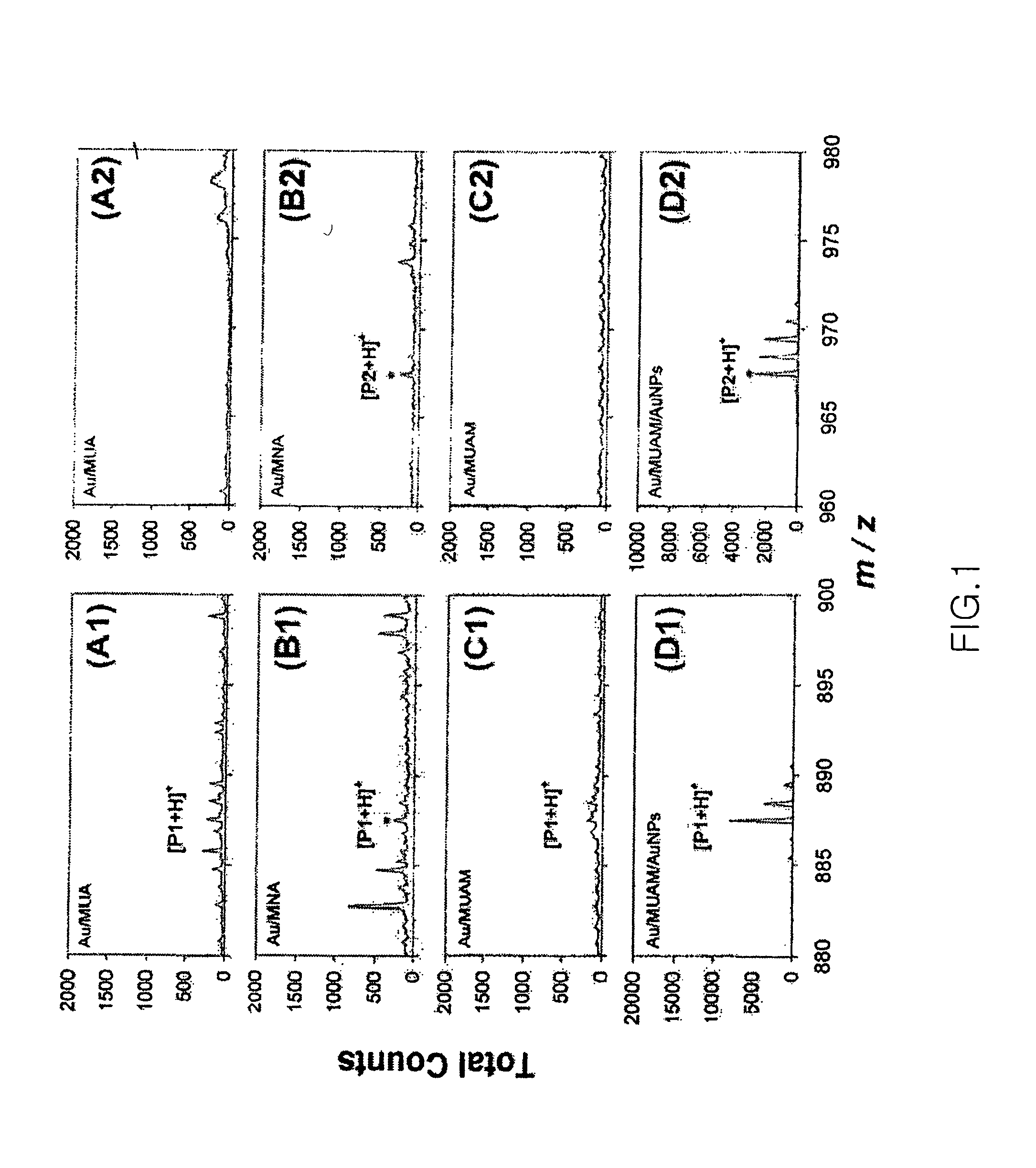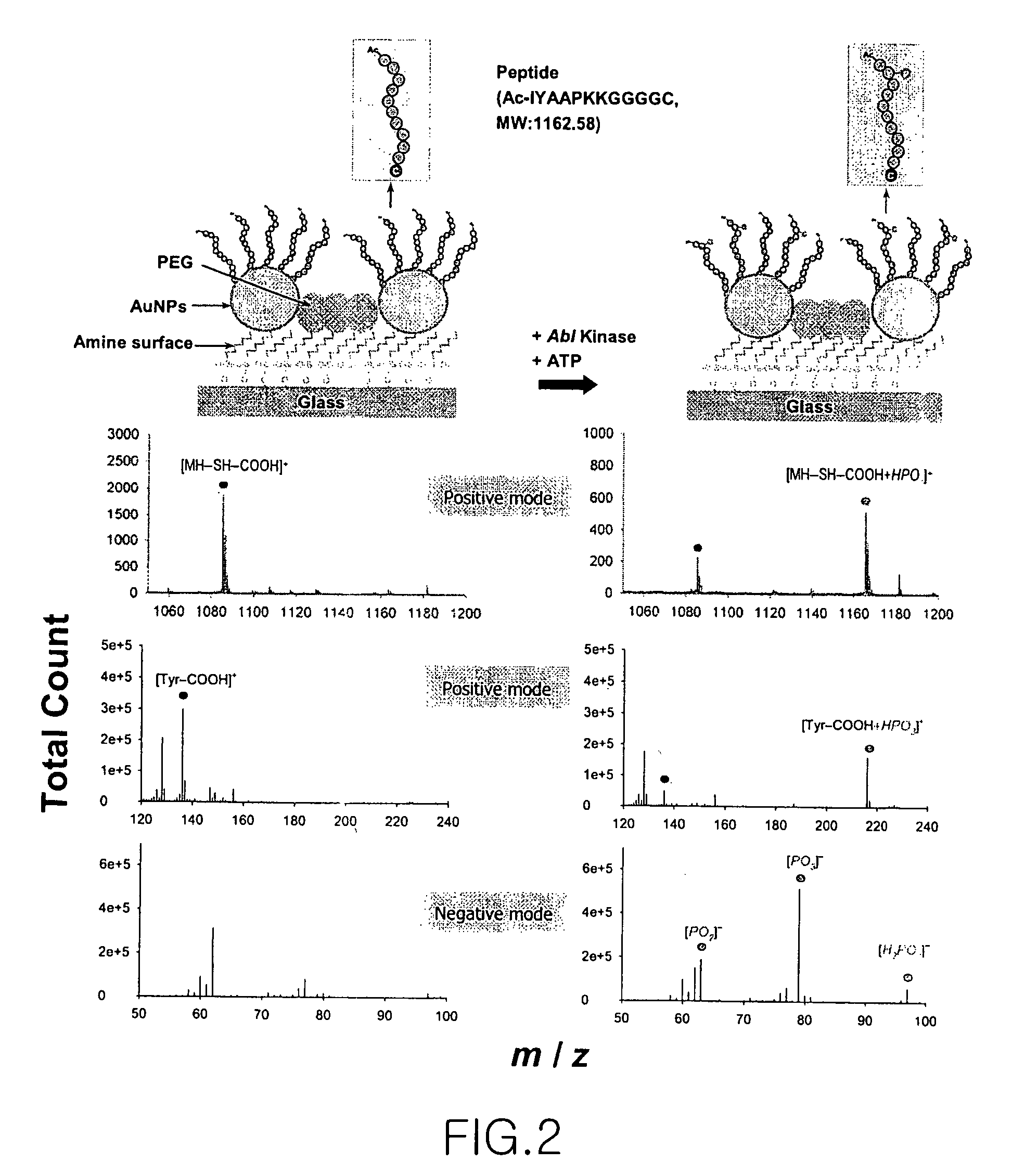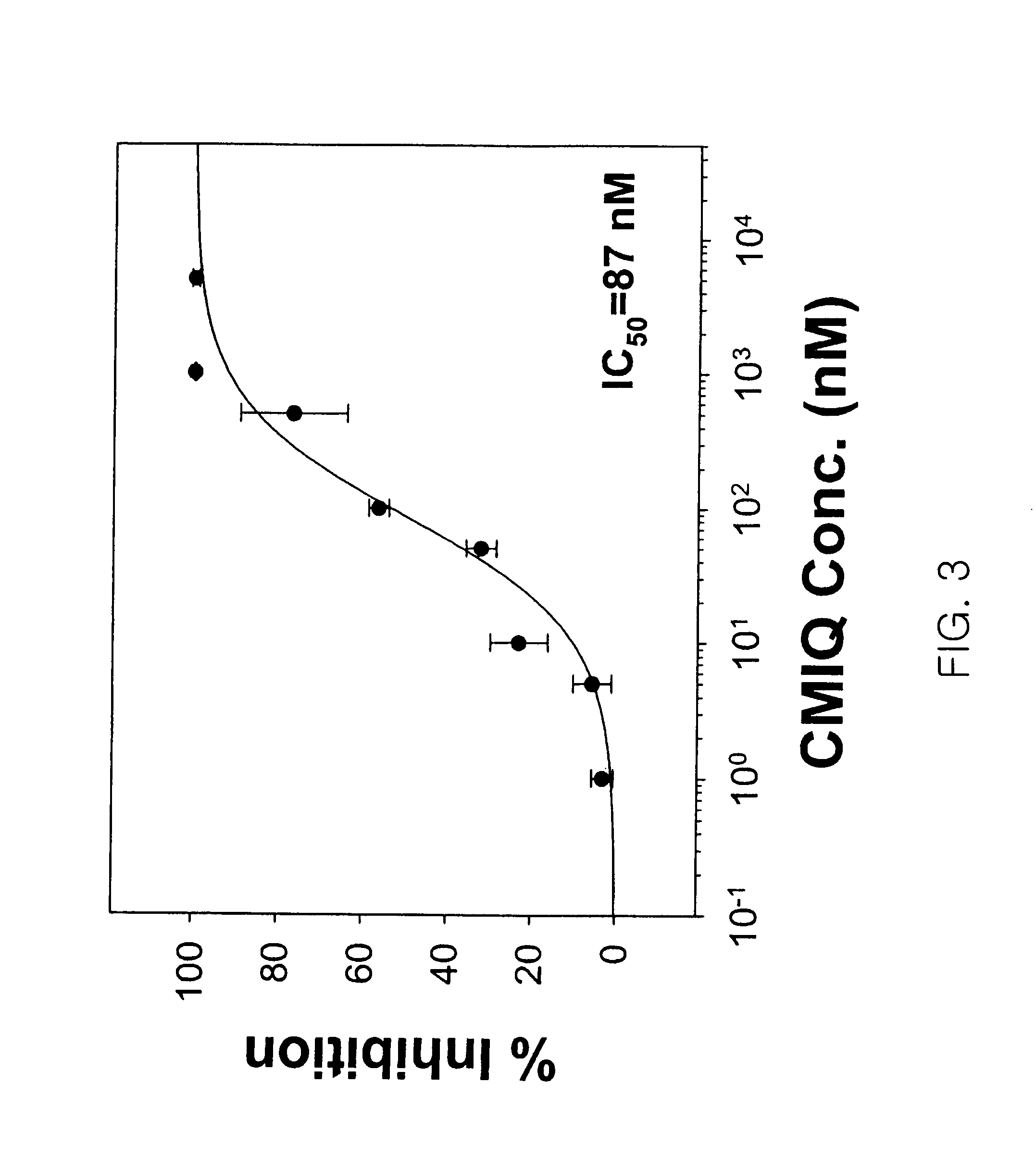Construction of gold nanoparticle-based peptide chip, and assaying enzyme activity and inhibitor effect using secondary ion mass spectrometric analysis thereof
a peptide chip and gold nanoparticle technology, applied in the field of gold nanoparticle-based peptide chips, can solve the problems of time-consuming and laborious, sims has encountered difficulties in directly detecting biomolecules on the chip surface, and methods still encounter many difficulties in direct application to the peptide chip, so as to achieve the effect of amplifying the mass signal of peptides
- Summary
- Abstract
- Description
- Claims
- Application Information
AI Technical Summary
Benefits of technology
Problems solved by technology
Method used
Image
Examples
example 1
Preparation of Gold Nanoparticle-Peptide Chip
[0047]A substrate comprising titanium (Ti, 20 Å) and gold (Au, 400 Å), sequentially plated on silicon, was immersed in a pirana solution of sulfuric acid / hydrogen peroxide for 5 minutes, and was then taken out of the solution and washed with distilled water.
[0048]To construct a self-assembled monolayer on the substrate, the substrate was immersed in an ethanol solution of 2 mM 11-mercaptoundecylamine (MUAM) (Dojindo) under a nitrogen atmosphere for 2 hours, and then taken out of the solution and washed with ethanol.
[0049]85 μL of an aqueous solution of 30 mM HAuCl4.3H2O (Aldrich) was added to 97.3 mL of pure distilled water, and the solution was stirred for 1 minute. Then, 1 mL of an aqueous solution of 1% C6H5Na3O7.3H2O (trisodium salt, Sigma) was added thereto and the mixture solution was stirred for 2 minutes. After completion of the stirring, 85 μL of an aqueous solution of 300 mM NaBH4 (sodium borohydride, Sigma) was added to the sol...
example 2
Secondary Ion Mass Spectrometry of Peptide in Gold Nanoparticle-Peptide Chip
[0063]The secondary ion mass spectrometer of peptide in the gold nanoparticle-peptide chip was performed and it was observed that the secondary ion mass signal of the peptide was amplified by the gold nanoparticles. The secondary ion mass spectrometry was performed using TOF-SIMS V (ION-TOF GmbH) with Au1+ or Bi1+ primary ions (25 KeV) in static surface conditions (13 ions / cm2). The measured surface area was 500×500 μm2, and the measurement results showed that the resolutions of peaks for CH1+, C2H3+ and Au1+ were all maintained at 5,000 or higher.
[0064]In order to compare the effects of the gold nanoparticles on the mass signal amplification of peptide, the gold nanoparticle-(Ac-PRNYVTP-NH2 (SEQ ID NO: 7)) chip and gold nanoparticle-(Ac-PRNYpVTP-NH2 (SEQ ID NO: 7)) chip prepared in Examples 1 and 2, respectively, together with peptide chips containing said sequences and having no gold nanoparticles, were us...
example 3
Results of Secondary Ion Mass Spectrometric Measurement for Kinase Reaction
[0067]Abl kinase (Calbiochem), ATP and MgCl2 were added to 50 mM Tris buffer (containing 0.05 mM EDTA, 1 mM DTT, 0.015% Tween-20 and 0.1 mg / ml BSA, pH 7.5) to final concentrations of 2 U, 150 μM and 30 mM, respectively, to prepare a reaction solution. Then, the reaction solution was allowed to react on the gold nanoparticle-bound peptide chip prepared in Example 1-(3), at 30° C. for 2 hours. After completion of the kinase reaction, the secondary ion mass spectrometric analysis in the peptide chip was carried out in the same manner as in Example 2, and the analysis results are shown in FIG. 2. The secondary ion mass spectrometric analysis was carried out using TOF-SIMS V (ION-TOF GmbH) with an energy of 25 KeV in static surface conditions (13 ions / cm2) in the same manner as in Example 2, and was also carried out in an Au1− or Bi1− anion mode in addition to Au1+ or Bi1+ primary ions. The measured surface area w...
PUM
| Property | Measurement | Unit |
|---|---|---|
| mass | aaaaa | aaaaa |
| temperature | aaaaa | aaaaa |
| size | aaaaa | aaaaa |
Abstract
Description
Claims
Application Information
 Login to View More
Login to View More - R&D
- Intellectual Property
- Life Sciences
- Materials
- Tech Scout
- Unparalleled Data Quality
- Higher Quality Content
- 60% Fewer Hallucinations
Browse by: Latest US Patents, China's latest patents, Technical Efficacy Thesaurus, Application Domain, Technology Topic, Popular Technical Reports.
© 2025 PatSnap. All rights reserved.Legal|Privacy policy|Modern Slavery Act Transparency Statement|Sitemap|About US| Contact US: help@patsnap.com



